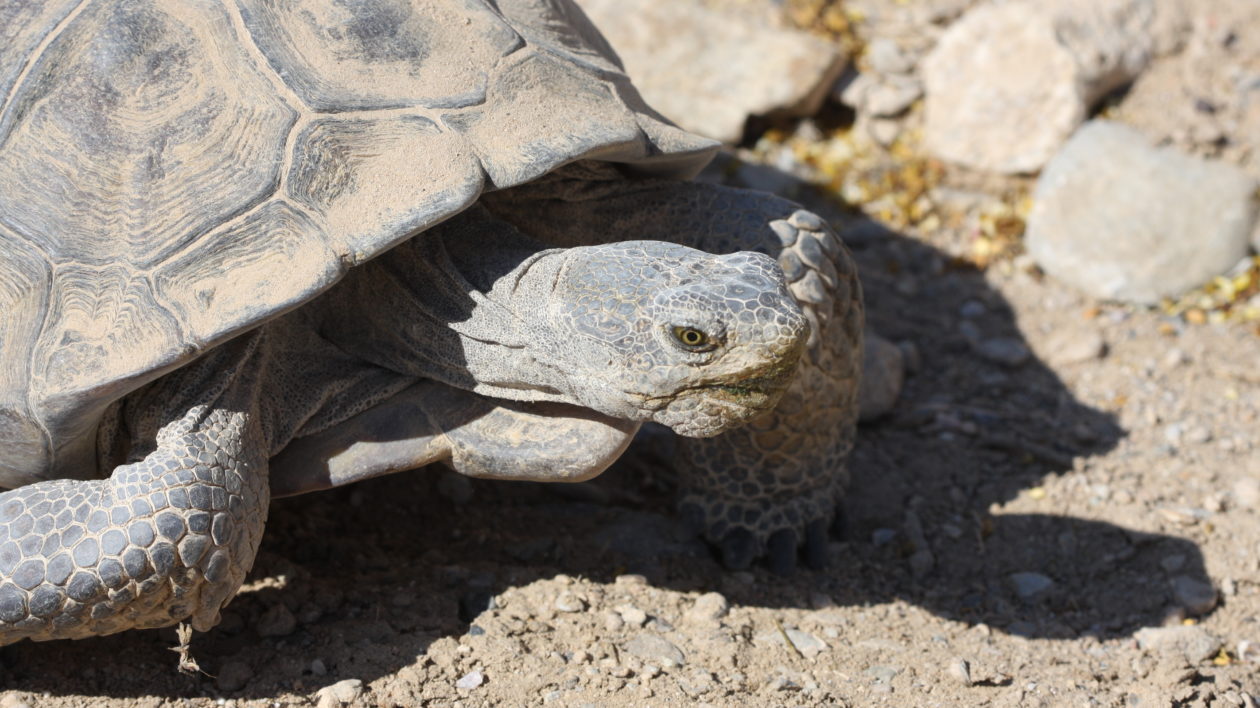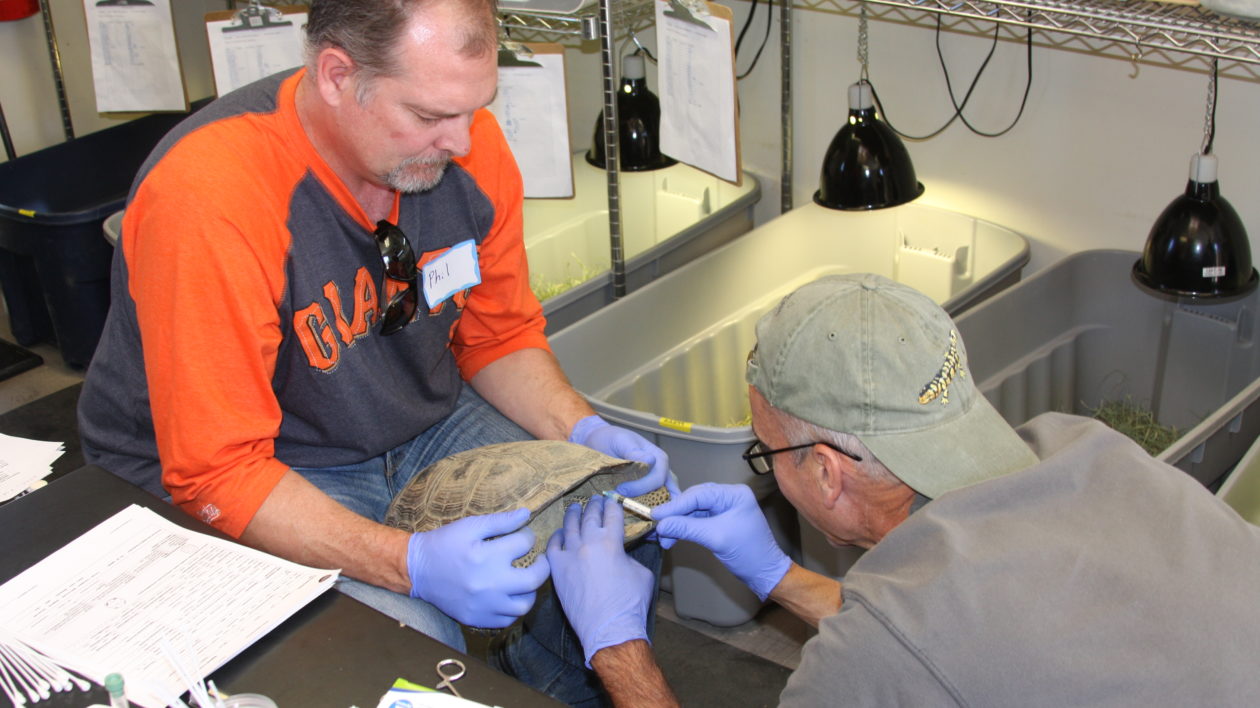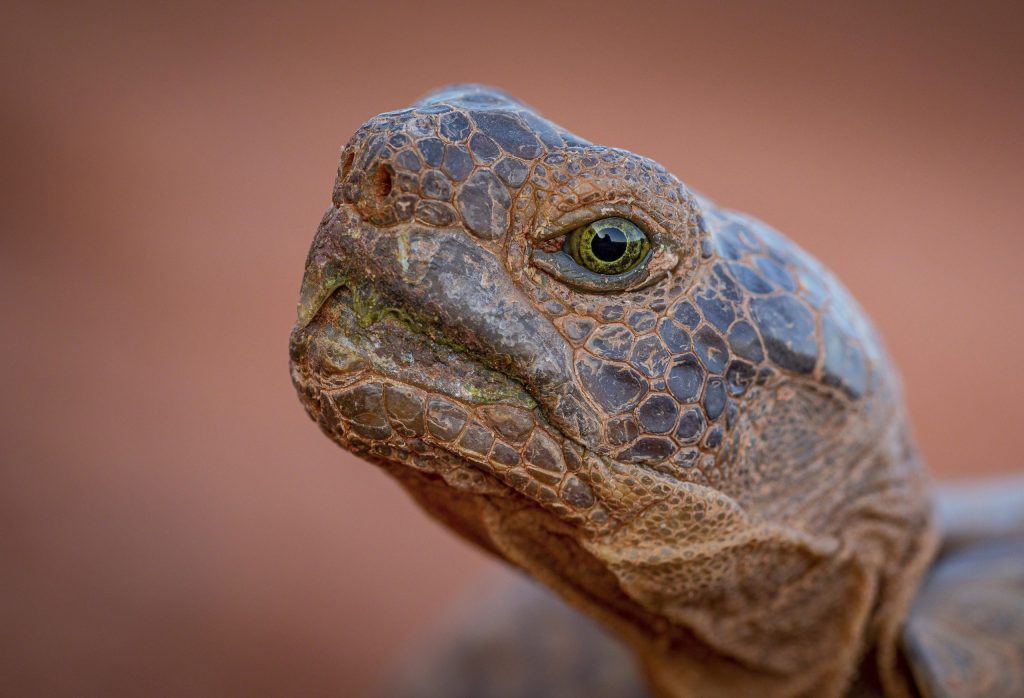There’s a long-lived tortoise in the Nevada desert that started life as a kid’s pet and ended up in a cactus patch. Peter Scott studies the insides of that tortoise on a screen. His scan sessions are not Matrix movie flashy, but mind-boggling nonetheless. He’s analyzing DNA and by doing so he’s unraveling the way we move animals while also studying creatures native to his fascinations.
“Ever since I could walk, I’ve wanted to see what’s under rocks so reptiles and amphibians are the critters I find myself working on the most,” says Scott, West Texas A&M University assistant professor. “I’m interested in patterns of biodiversity and why species in certain places are not in other places and how we preserve that.”
The tortoise isn’t in the dry terrain near Las Vegas by accident. It was put there on purpose by U.S. Fish and Wildlife Service (USFWS) along with more than 9,100 other Mojave desert tortoises between 1997 and 2014. USFWS collected the unwanted and displaced reptiles and relocated them to the 39 fenced square-mile site. Fifteen hundred other tortoises were already there.

The desert tortoise is protected under the Endangered Species Act. It’s been on the list as threatened since 1990. The Mojave population, which includes Nevada, is also protected so the transplants were tracked for years. Some died. Some didn’t.
“That suddenly becomes a really interesting data set,” says Brad Shaffer, UCLA Department of Ecology and Evolutionary Biology distinguished professor. “You’ve got a bunch of animals released. Some lived. Some died. The question is why. What makes a survivor?”
Scott and Shaffer, who is also director of La Kretz Center for California Conservation Science, analyzed DNA in tortoise blood samples to answer that question. They assumed they’d verify the traditional answer. Location. The closer a transplant site is to a native site, the greater the survivability rate. They assumed wrong. And now they have a new metric for determining where to put plants and animals as the climate continues to change and migrations continue to shift. The answer is genetic diversity.

Every animal, including human, has two sources of DNA. One source from each parent. The less those two sources have in common, the lower the chance of inbreeding. That’s been known for a long time, of course. What’s new is this: the less those two sources have in common, the higher the chance of survival. The difference is subtle. But add up minor differences and you have a pile of diversity. Genetic diversity breeds improved adaptability.
“It’s a very striking result,” Shaffer says. “What’s striking is that it says at the individual level, your genetic diversity is the variable and if we move you to a new place and expose you to a new set of challenges, you have a better chance of surviving. It doesn’t say anything about your ability to leave offspring, but it improves your survivability and your opportunity to contribute to the population.”
This likely has applicability to other species, especially a conservation tactic used to address climate change called assisted migration.

“We’re fragmenting habitat so plants and animals can’t move on their own as climate change happens,” Shaffer says. “If we want to help plants and animals move, we might have to do assisted migration and we might need to know who to select for assisted migration.”
Scientific models compare current climate portfolios to what climate portfolios will be decades from now. Using genetic diversity research within that, what a species needs for adaptation down the road could have priority now putting a species a bit ahead of the curveballs coming at all of us.
“In order to maintain normal patterns of biodiversity, folks are thinking about how we potentially move animals around to augment populations,” Scott says. “Diversity is not the sole metric, but it increases move success. It’s about finding which genetic variables will do a better job in future conditions.”




I adopted my tortoise Stretch from the Nevada program in 2013. I was very impressed with the care and expectations they had for the survival of Stretch. He is estimated to be around 90 years old, my grandchildren love watching him and learning about tortoises. I told them they might become his caretaker next.
This is very interesting. I am fascinated with desert tortoises, having grown up in the Sonoran desert in Tucson. I remember seeing them there.
I am wondering about why the 9100+ desert tortoises talked about here were “unwanted and displaced” and therefore put in this area near Las Vegas. What does this mean?